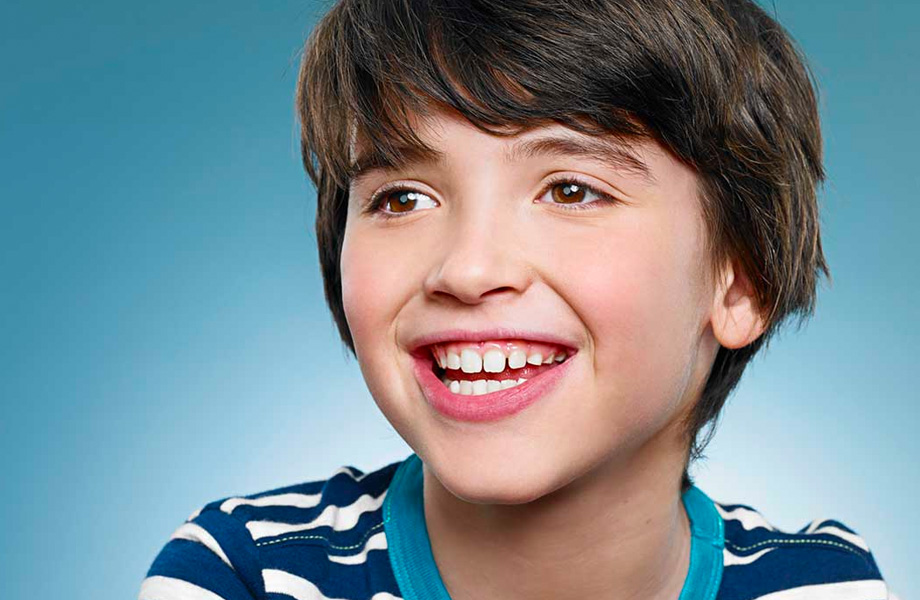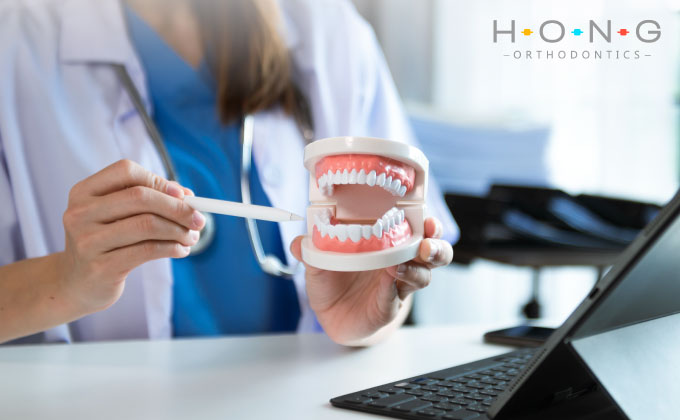What is Two Phase Treatment in Orthodontics?
Two-phase orthodontic treatment in Irvine is a very specialized process that encompasses tooth straightening and physical, and facial changes. The major advantage of a two-phase treatment is to maximize the opportunity to accomplish the ideal healthy, functional, esthetic result that will remain stable throughout your life.
What If I Put Off Treatment?
The disadvantage of waiting for the complete eruption of permanent teeth and having only one phase of treatment for someone with a jaw discrepancy is facing the possibility of a compromised result that may not be stable.
First Phase Treatment: Your Foundation For a Lifetime of Beautiful Teeth
The goal of the first phase of treatment is to develop the jaw size in order to accommodate all the permanent teeth and to relate the upper and lower jaws to each other. Children sometimes exhibit early signs of jaw problems as they grow and develop. An upper and lower jaw that is growing too much or not enough can be recognized at an early age. If children after age 6 are found to have this jaw discrepancy, they are candidates for early orthodontic treatment in Irvine & Orange CA.

Planning Now Can Save Your Smile Later – Because they are growing rapidly, children can benefit enormously from an early phase of orthodontic treatment utilizing appliances that direct the growth relationship of the upper and lower jaws. Thus, a good foundation can be established, providing adequate room for the eruption of all permanent teeth. This early correction may prevent the later removal of permanent teeth to correct overcrowding and/or surgical procedures to align the upper and lower jaws. Leaving such a condition untreated until all permanent teeth erupt could result in a jaw discrepancy too severe to achieve an ideal result with braces.
Making Records to Determine Your Unique Treatment – Orthodontic records will be necessary to determine the type of appliances to be used, the duration of treatment time, and the frequency of visits. Records consist of models of the teeth, x-rays, and photographs.
Resting Period
In this phase, the remaining permanent teeth are allowed to erupt. Retaining devices are not usually recommended since they may interfere with eruption. It is best to allow the existing permanent teeth some freedom of movement while the final eruption of teeth occurs. A successful first phase will have created room for teeth to find an eruption path. Otherwise, they may become impacted or severely displaced.
Monitoring Your Teeth’s Progress – In other words, at the end of the first phase of treatment, teeth are not in their final positions. This will be determined and accomplished in the second phase of treatment. Selective removal of certain primary (baby) teeth may be in the best interest of enhancing eruption during this resting phase. Therefore, periodic recall appointments for observation are necessary, usually on a six-month basis.
Second Phase Treatment: Stay Healthy And Look Attractive
The goal of the second phase is to make sure each tooth has an exact location in the mouth where it is in harmony with the lips, cheeks, tongue, and other teeth. When this equilibrium is established, the teeth will function together properly.

Movement & Retention – At the beginning of the first phase, orthodontic records were made and a diagnosis and treatment plan was established. Certain types of appliances were used in the first phase, as dictated by the problem. The second phase is initiated when all permanent teeth have erupted and usually requires braces on all the teeth for an average of 24 months. Retainers are worn after this phase to ensure you retain your beautiful smile.
Hong Orthodontics Provides the Following Ortho Treatment in Irvine & Orange CA
Frequently Asked Questions
What is two-phase orthodontic treatment?
Two-phase treatment is a specialized treatment plan we develop for young children to review their dental development. The purpose is to identify any developing problems, treat them as soon as possible, and minimize the need for additional problems.
Does my child need two-phase treatment?
The only way to know for certain if your kid requires orthodontic care is to bring him to an orthodontist. However, some reasons why you might suspect your child needs two-phase treatment include their bad habits, such as using a pacifier or sucking their thumb for too long; likewise, if you or your partner have had orthodontic problems, your child might have them too.
How long do Phase 2 braces last?
This all depends on the treatment undergone in Phase 1. It’s possible that this phase of orthodontics can last anywhere between 12 to 20 months. Still, each case is unique, and you should consult with a board-certified orthodontist.
What to know about two-phase treatment?
Two-phase treatment is the type of treatment your child needs to ensure they have a proper dental development. Starting this specialized care does not mean your kid will get braces immediately; instead, what the treatment focuses on is on guiding the child through their development.
Is phase two orthodontics for children worth the cost?
Yes. Children will benefit greatly from this specialized treatment because they won’t have to deal with the complications that come from orthodontic problems and the difficulties or challenges of oral health. In the long run, families can save a lot of money by investing time and energy into two-phase treatment.
How often will I come in for an appointment?
That will depend a lot on your child’s specific case. Some patients have to come back to the office, on average, every 6 weeks, but you will have to ask your kids’ orthodontist about your case’s specifics.




